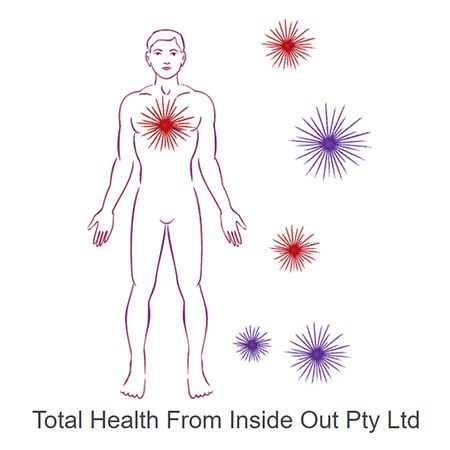
Endorphins are one the new buzzwords that we associate with exercising but what are they? And why do we need them? Read this article to find out.
Essentially, the traditional benefits of exercising is to improve and maintain physical fitness, as well as help in preventing diseases such as high blood pressure, heart disease, and diabetes. However, exercise is also great for boosting your mood.
What are Endorphins?
When you exercise, the body releases endorphins while it decreases the stress hormones like cortisol. Endorphins are the body’s natural feel good chemicals, and when released during exercise, they trigger a positive feeling and naturally boost your mood. Aside from endorphins, exercise also releases other hormones like adrenaline, serotonin, and dopamine. These hormones work together to make you feel good and positive. Endorphins, along with serotonin and dopamine, are known as happiness hormones.
Endorphins are produced in the brain and they function as the body’s natural analgesics or painkillers. When the endorphins are released during exercise, they can produce feelings of euphoria and a general state of wellbeing. This feeling of euphoria is also known as “runner’s high.” The endorphins produced are powerful enough to mask the pain being felt by a person. Regular exercise has also proven to reduce stress, boost self-esteem, and improve sleep. Physically active people are known to recover from mild depression more quickly. There is also a strong correlation between physical activity and good mental health.
Different Types of Exercises that Boost Endorphins
When it comes to boosting your mood and getting those endorphins flowing, there's a world of exercises to choose from. Whether you're a fan of high-energy cardio or you prefer the zen vibes of yoga, there's something for everyone.
Cardio workouts, like running, cycling or dancing, are known for their ability to release a flood of endorphins. These vigorous exercises get your heart pumping and your blood flowing, leading to that exhilarating "runner's high."
If lifting weights is more your style, you're in luck! Weightlifting also triggers the release of endorphins. Those sets and reps not only build strength but also help lift your spirits.
Yoga and other mind-body practices, on the other hand, combine movement, deep breathing and mindfulness to create a unique endorphin-boosting experience. They're all about finding your inner peace while giving your body a gentle workout.
And let's not forget about the great outdoors! Hiking, swimming, and even playing team sports can fill your brain with those delightful endorphins. So, whether you're hitting the gym or exploring nature, you're on your way to a happier, healthier you.
The Mind-Body Connection: Exercise and Mental Wellbeing
Endorphins are released during exercise and have a profound impact on your mood. They can help reduce stress, ease anxiety and even combat feelings of depression. So, next time you're feeling a bit down, consider going for a brisk walk or hitting the yoga mat.
But that's not all. Exercise also stimulates the production of other brain chemicals like serotonin and dopamine, which play crucial roles in regulating mood and happiness. Plus, staying active can improve self-esteem and body image, giving you an extra boost of confidence.
So, whether it's a quick jog, a dance session, or a peaceful stretch, remember that exercise isn't just about looking good; it's about feeling great from the inside out.
Endorphins and Natural Pain Relief through Exercise
Picture this: you're hitting the track for a jog, and as you start to pick up the pace, you feel a rush of euphoria and energy. That is the work of endorphins. These are your body's very own painkillers, and they're released by your brain and nervous system to combat discomfort and pain.
When you engage in physical activity, whether it's a brisk walk, a vigorous workout, or even a yoga session, your body goes into action mode. As your heart rate increases and you push your limits, your brain senses the potential stress on your body.
To counteract this stress, your brain releases endorphins. These tiny molecules are like the cavalry rushing in to save the day. They interact with specific receptors in your brain, known as opioid receptors, which are also involved in the body's response to pain.
Endorphins bind to these receptors and effectively reduce the perception of pain. In other words, they act as natural painkillers, making you feel less discomfort even as you challenge yourself physically.
Not only that, but regular exercise can also improve your pain tolerance over time. This means you might find that you're better equipped to handle pain when it arises.
So, whether you're dealing with a niggling ache or something more chronic, consider incorporating exercise into your routine. It's like a free, all-natural pain relief prescription!
How Long Do You Need to Exercise to Feel the Benefit?
Your mood will still be improved even if you only exercise for a short amount of time. Moderate exercise of around 10 minutes is enough to improve your mood and vigour and also decrease fatigue. However, to get all the benefits of exercising, not just the mood boosting aspects, you should at least have a moderate exercise for at least 30 minutes every day.

Creating a Sustainable Exercise Routine for Endorphin Boosts
We all know that exercise isn't just about breaking a sweat – it's about that unbeatable rush of endorphins and the surge of positivity that comes with it. But let's face it, building a consistent exercise routine can sometimes feel like navigating a rugged trail. Fear not, because we're here to guide you on the path to a sustainable routine that keeps those endorphins flowing like a rolling wave.
Here are tips to help you craft a routine that's not only effective but also enjoyable and maintainable:
-
Set Smart Goals: Kick off your journey with achievable goals. Think baby steps, not giant leaps. This helps you avoid burnout and sets you up for long-term success.
-
Find Your Motivation Mojo: Discover what gets your engine revving. It might be pumping up your favorite tunes, working out with a friend or simply enjoying the serenity of exercising outdoors.
-
Mix It Up: Variety is the spice of life, and the same goes for your workout routine. Switch between different exercises to keep things exciting and prevent boredom from creeping in.
-
Prioritise Consistency: Treat your exercise sessions like important appointments. Consistency is the secret sauce that turns sporadic efforts into lasting habits.
-
Be Kind to Yourself: We all have those days when motivation seems to take a vacation. On such days, don't be too hard on yourself. A shorter, lighter workout is still better than no workout at all.
-
Listen to Your Body: Your body is your best guide. If you're feeling fatigued or sore, it's okay to take a rest day or opt for a gentler workout. Pushing too hard can lead to burnout or even injuries.
-
Make it a Lifestyle: Shift your perspective from viewing exercise as a chore to embracing it as a way of life. When it becomes part of your routine, you're more likely to stick with it.
-
Celebrate Small Wins: Every step forward deserves a pat on the back. Celebrate your progress, whether it's hitting a new personal best or simply sticking to your routine for a certain period.
-
Include Recovery Time: Don't forget that rest and recovery are crucial components of any exercise routine. Schedule in rest days to allow your body to rejuvenate.
-
Stay Flexible: Life can throw curveballs, and your routine might need to adapt. Be flexible and willing to adjust your schedule when needed.
The Science of Exercise and Endorphin Release
For years, exercise enthusiasts have celebrated the feel-good vibes that follow a good workout. And guess what? Science has caught up, unveiling the fascinating role of endorphins in this joyful phenomenon.
1. The runner's high study: A groundbreaking study published in the journal Psychology Today explored the connection between running and endorphin release. Researchers found that after a 30-minute moderate-intensity run, participants reported a significant increase in their mood and feelings of happiness. Brain scans also revealed higher levels of endorphins circulating in the brain, supporting the notion of a "runner's high".
2. Exercise and pain perception: A study conducted by the University of Maryland School of Medicine delved into the relationship between exercise, endorphins and pain perception. Participants engaged in cycling sessions, and researchers found that endorphin levels increased during exercise. More importantly, the participants' pain perception was reduced, suggesting that the endorphins played a role in natural pain relief.
Several studies suggest that the intensity of exercise matters. Moderate to high-intensity workouts appear to trigger a more significant release of endorphins compared to lower-intensity activities.
The Takeaway
The evidence is clear. Exercise is a powerful catalyst for releasing endorphins and elevating your mood. Whether you're hitting the pavement, lifting weights or practising yoga, you're giving your body a natural dose of those "feel-good" chemicals.
So, next time you're lacing up your sneakers, remember that you're not just working on your physical health–you're also treating your brain to a surge of happiness-inducing endorphins. It's nature's way of rewarding your efforts and keeping you motivated on your journey to a healthier, happier you.
|
Do you have a natural health & wellness business? |









